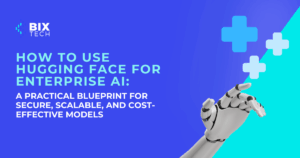How to Select the Best Tech Stack: A CTO’s Roadmap to Sustainable Growth

Sales Development Representative and excited about connecting people
Choosing the right technology stack is one of the most crucial early decisions for any CTO or tech leader. While the impact of your choices may not be immediately obvious, they quietly shape every aspect of your product—from its architecture and scalability to your team’s velocity and the long-term sustainability of your solution. As many companies like Airbnb have discovered, what works wonderfully at launch can become an obstacle as your platform grows. This comprehensive guide will help you confidently navigate the tech stack selection process, ensuring your decisions are both future-proof and aligned with your business goals.
Why Your Tech Stack Decision Matters
Your initial technology stack forms the foundation for your entire software ecosystem. It influences everything from system performance and maintainability to hiring needs and future integrations. Making a hasty or uninformed choice can result in costly rework, scalability challenges, and even critical security risks as your product matures.
Step 1: Understand Your True Requirements
Before getting lost in debates about frameworks or database engines, step back and clarify the essentials. The right tech stack is always tied to your product’s purpose, your team’s strengths, and your long-term business needs.
Clearly Define Your Product
- Purpose and Audience: Is your application customer-facing or intended for internal users? A high-traffic SaaS platform needs different levels of reliability and security than an internal analytics tool.
- Product Lifespan: Are you building a quick MVP that might pivot, or a robust platform designed to evolve for years? Short-lived products often benefit from rapid development stacks, while long-term systems demand modular, maintainable architectures.
- Future Evolution: Is your product scope narrow and focused, or will it expand with more features and integrations? If expansion is likely, choose a stack that scales gracefully—minimizing the need for constant refactoring.
Assess Your Team’s Skills and Delivery Timeline
- Team Strengths: Leverage your team’s existing expertise to accelerate early development. However, don’t let current skills limit your vision—plan for upskilling if your roadmap requires unfamiliar technologies.
- Time Pressure: If speed is critical, familiar tools may be the best fit. If you have more time, consider investing in a more scalable or modern stack, even if it requires a steeper learning curve at first.
Checklist: Assessing Your Requirements
- [ ] Define target users and use cases
- [ ] Clarify intended product lifespan
- [ ] Map out expected feature growth and integrations
- [ ] List your team’s current technical strengths and gaps
- [ ] Establish delivery expectations and timeline flexibility
Step 2: Factor in External Demands and Long-Term Viability
Choosing a tech stack is not just about internal preferences. It must align with budget constraints, regulatory requirements, integration demands, and ongoing maintenance realities.
Calculate Total Cost of Ownership
- Licensing Fees: Are there recurring costs for frameworks, libraries, or platforms?
- Infrastructure: Consider hosting, cloud services, and scaling expenses.
- Vendor Lock-In: Will you be dependent on specific vendors or proprietary technologies?
- Maintenance Overhead: How easy is it to onboard new developers and keep documentation up to date?
Plan for Security and Compliance
For industries like finance or healthcare, compliance is non-negotiable. Your stack should support robust audit trails, data isolation, and evolving regulatory standards. Remember, what’s compliant today might not be tomorrow—choose technologies with active community and vendor support.
Integration and Ecosystem Compatibility
Modern systems rarely operate in isolation. Consider how your stack will interact with legacy systems, APIs, and external services. Poor integration choices can turn every new connection into a costly headache.
Focus on Maintainability
Sustainable development depends on clear ownership, predictable upgrade paths, and strong community support. Choose technologies that will be easy to update and maintain—even as your team changes.
Checklist: External & Long-Term Considerations
- [ ] Calculate ongoing and hidden costs
- [ ] Analyze security and compliance requirements
- [ ] Map integration needs (existing and future)
- [ ] Evaluate long-term maintainability and community health
Step 3: Compare Popular Tech Stack Combinations
You don’t always need to build your stack from scratch. Established tech stack combinations offer proven compatibility, strong community support, and faster onboarding—ideal for teams that need to move quickly and reliably.
1. MERN Stack (MongoDB, Express.js, React, Node.js)
- Best for: Rapid prototyping, single-page apps, small teams
- How it works: Full JavaScript environment—React for the frontend, Express/Node for backend logic and APIs, MongoDB for flexible document storage.
- Why choose it: Minimal context switching, quick onboarding. Companies like Netflix use React and Node extensively for both public-facing apps and internal tools.
2. Django + React + PostgreSQL
- Best for: Data-driven platforms, robust internal systems, long-term projects
- How it works: Django (Python) handles backend logic and admin tools, PostgreSQL manages structured relational data, React powers dynamic UIs.
- Why choose it: Strong focus on security, scalability, and structured data workflows. Fast development with built-in admin and user management.
3. Next.js + Node.js + PostgreSQL or MongoDB
- Best for: SEO-sensitive apps, hybrid or server-side rendered SaaS products
- How it works: Next.js combines frontend and backend logic for server-rendered or statically generated sites. Node.js executes server logic; PostgreSQL or MongoDB as data storage depending on data structure needs.
- Why choose it: Great for fast initial loads, dynamic content, and unified codebases.
4. Ruby on Rails + Hotwire + PostgreSQL
- Best for: Rapid iteration, startups, cohesive backend/frontend development
- How it works: Rails provides backend structure; Hotwire enables reactive interfaces without full JavaScript frameworks; PostgreSQL delivers consistent data handling.
- Why choose it: Streamlined development, less decision fatigue, and fast time-to-market.
For a deeper look at how AI and data-driven approaches are reshaping software stack decisions, check out AI-Driven Innovations in Software Development and Effective Software Development Practices.
Step 4: Build for Scalability and Future Growth
Your tech stack should grow alongside your business. Anticipate rising user loads, new feature demands, and evolving market requirements.
Actionable Steps to Future-Proof Your Stack
- Choose Modular Solutions: Favor frameworks and components that allow you to add or swap features without complete rewrites.
- Prioritize Documentation: Good documentation accelerates onboarding and reduces knowledge silos.
- Automate Testing & Deployment: Invest early in CI/CD pipelines to maintain quality as you scale.
- Monitor Industry Trends: Stay updated on best practices and new tools—what’s state-of-the-art today may be obsolete tomorrow.
- Plan for Team Growth: Pick technologies with large, active communities to make hiring and training easier.
Quick Reference: Tech Stack Selection Checklist
- [ ] Product scope and user needs defined
- [ ] Team strengths and learning capacity assessed
- [ ] Cost, security, and compliance requirements analyzed
- [ ] Integration and ecosystem compatibility mapped
- [ ] Maintenance and upgrade paths evaluated
- [ ] Popular stack options compared and tested
- [ ] Scalability and modularity planned
- [ ] Documentation and automation established
Final Thoughts
Selecting the right tech stack is not a one-time decision—it’s a strategic commitment that will impact your product’s stability, scalability, and long-term value. By taking a structured, forward-thinking approach, you can avoid common pitfalls and set your team up for enduring success. For more expert insights on scaling your business with data-driven technology, explore Data Science: The Business Revolution.
Ready to future-proof your product? Use these steps as your roadmap, and you’ll be well on your way to building sustainable, high-performance software that stands the test of time.










